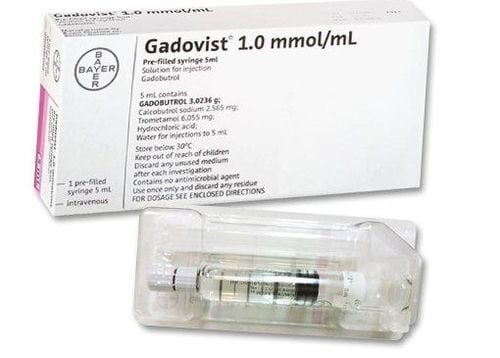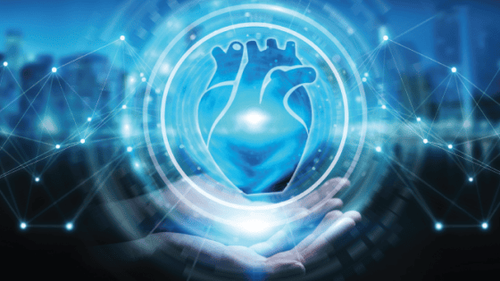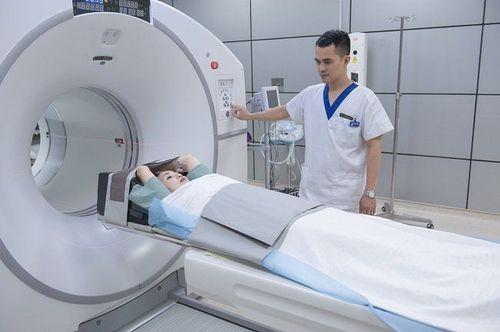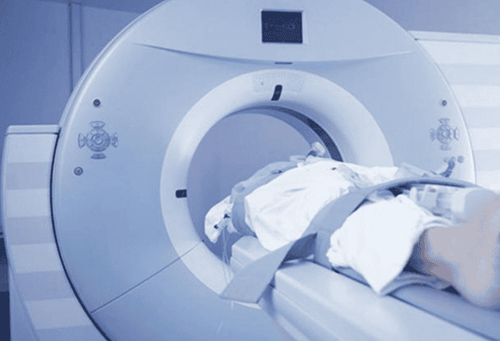This is an automatically translated article.
The article was professionally consulted by Specialist Doctor I Tran Cong Trinh - Radiologist - Radiology Department - Vinmec Central Park International General Hospital. The doctor has many years of experience in the field of diagnostic imaging.Computed tomography is a modern imaging technique that uses X-rays to view lesions inside the body. So why is it necessary to have a computed tomography scan, how is the computed tomography procedure done?
1. What is computed tomography?
Computed tomography, also known as CT, is a method that uses X-rays and digital imaging systems and software to create cross-sectional images of the body.Computed tomography is a non-invasive examination technique that allows to clearly show images of structures and internal parts of the body such as soft tissues, blood vessels, bones, ..... Image result Used to aid in diagnosis and detection of lesions and pathologies.

Chụp cắt lớp vi tính cho phép chẩn đoán hình ảnh chính xác và rõ ràng hơn
2. Why is computed tomography necessary?
Computed tomography should be performed because of the following effects:Provides clear and detailed images of lesions and pathologies of soft tissue cells, blood vessels, bones, thereby helping to develop showing tumor, abscess, abnormality, deformity, thrombosis, hemorrhage, ... in positions in the body from head, face, neck, heart, chest, abdomen, pelvis, ... Help Accurately detects structural abnormalities without the need for invasive procedures, and is therefore painless. Computed tomography scan of the brain helps to detect serious abnormalities in the brain such as cerebral vascular occlusion, cerebral hemorrhage, cerebral ischemia, brain tumor, ... Support planning in surgical treatment, needle biopsy, radiation therapy, and some other minimally invasive surgery. Computerized tomography technology to reconstruct 3D images helps to accurately detect and evaluate the lesion location with 3-D images, thereby serving as the basis for making an appropriate treatment regimen, helping to orientate the patient. for surgical and radiotherapy. For congenital pathology cases, 3D reconstruction computed tomography is the basis for guiding and supporting plastic surgery for accuracy and for better treatment results. In some cases, a contrast-enhanced CT scan provides clearer imaging results to detect and accurately diagnose mass abnormalities in the body.
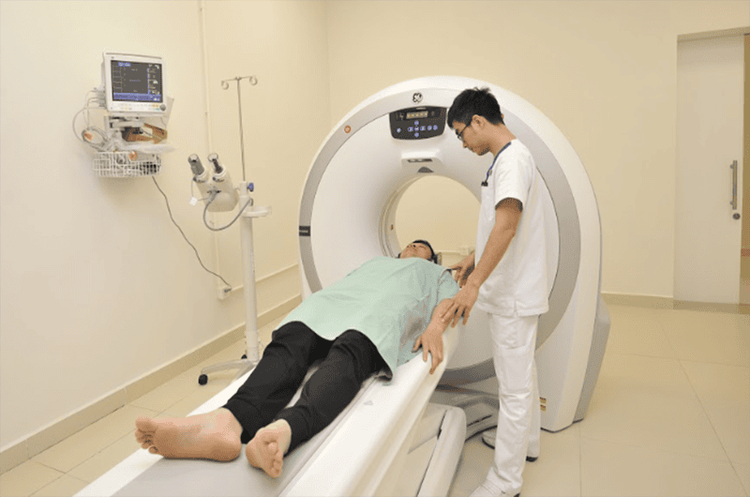
Vì sao cần phải chụp cắt lớp vi tính?
3. Compare the advantages and disadvantages of computed tomography with X-ray, MRI
Compared with X-ray, magnetic resonance imaging (MRI), computed tomography has the following advantages:Detailed, clear and accurate images, no overlap between images. Resolution in soft tissue imaging is higher than in radiography. High resolution when capturing structure, bone space. Fast computed tomography scan time and easy operation. In emergency cases, this is a suitable technique, capable of quickly surveying and evaluating multi-organ organs such as heart, lungs, liver, intestines, ... Computed tomography is a technique. The technique is used as an alternative for cases where MRI is contraindicated, such as using a pacemaker, metal heart valves, fixed hearing aids, foreign bodies in the body, ... Disadvantages of imaging Computed tomography compared to X-ray and MRI is:
The strong penetrating power of X-rays is also a limitation in detecting software damage compared with MRI. The resolution is lower than that of an MRI scan, especially in cases where the lesion size is small. Difficult to detect and distinguish between organs, lesions have the same density. Patients may be exposed to radiation during the scan, but the level of influence is within the allowable limits.
4. Computerized tomography procedure
The procedure of computed tomography is performed with the following steps:Step 1: The patient takes off jewelry and metal objects worn on his body to limit image interference, changes to the clinic's dressing gown, hospital. Step 2: The patient lies on his back on the imaging table or according to the technician's instructions. Normally, the process of computed tomography scan lasts from 3 - 5 minutes, or can be up to 15 - 45 minutes depending on the purpose and requirements for diagnosis. While taking pictures of the chest and abdomen, the patient needs to hold their breath according to the technician's instructions for clear imaging results. Step 3: The patient waits to receive the results for about 20-30 minutes, or maybe longer for cases requiring consultation.
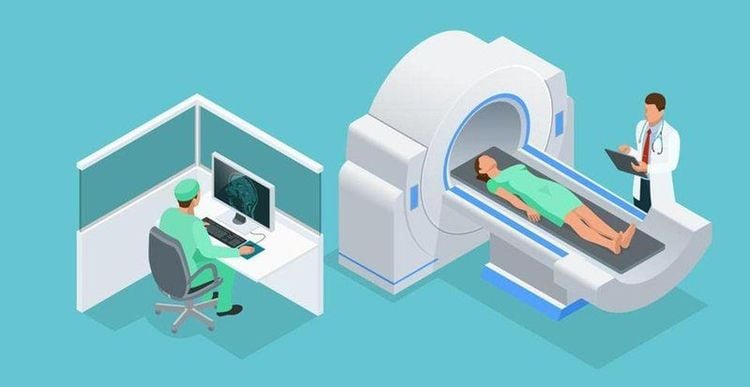
Quy trình chụp cắt lớp vi tính
5. Notes when taking computed tomography
When performing the computed tomography scan, there are a few things to keep in mind before, during and after the scan.5.1 Before CT scan
Women who are pregnant or suspect to be pregnant need to notify medical staff to be considered before taking the scan, to avoid affecting the development and health of the fetus. Tell your doctor about any medical conditions such as heart, kidney, asthma, diabetes, or drug allergies. In case the patient is assigned to have a computerized tomography scan with contrast injection, the family member and the patient need to sign an agreement before performing it. Before injecting contrast, the patient needs to fast for 4-6 hours and drink a moderate amount of water about 2 hours before the scan. If the patient is a young child or an infant, the child can be put to sleep to ensure that the child is not agitated or panicked during the scan. If the child is indicated for computed tomography with contrast injection, pre-anesthesia may be used to limit movement during injection.5.2 During computed tomography
During the scan, in cases where the patient has been injected with contrast material, there will be a burning sensation in the face, neck, chest, or extremities. However, this feeling will quickly disappear and the patient needs to try to keep the body still so that the computed tomography procedure is not noisy and the images obtained are clear.In addition to intravenous contrast injection, the patient may also be prescribed oral contrast or water for cases of abdominal imaging to check for abnormalities in the digestive tract.
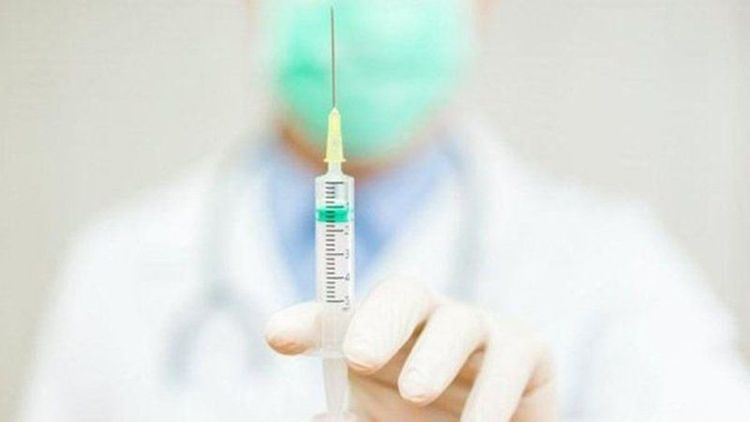
Người bệnh có thể xảy ra một số phản ứng nhẹ khi tiêm thuốc phản quang trong chụp MRI
5.3 After computed tomography
Patients injected with contrast medicine after the scan should be monitored at the imaging area for about 30 minutes to promptly detect and handle abnormalities, if any. In case the patient is normal and stable, the needle will be removed. After withdrawing the needle, the patient presses the injection site with their hands for about 5 to 10 minutes to limit bleeding. For patients who do not take contrast agents, after the CT scan, they can live and eat normally. In case the patient has any abnormal symptoms after the scan such as dizziness, vomiting, nausea, difficulty breathing, fever, itching, redness of the skin, etc., it is necessary to immediately take the patient to a nearby medical facility. or notify medical staff for timely treatment. Computed tomography is widely used in detecting and diagnosing lesions in most soft tissues, bones and blood vessels because of the clear, accurate, high-resolution images, real-time and real-time manipulation. show fast, easy.Currently, CT is the imaging method performed routinely at Vinmec International General Hospital. The computerized tomography procedure at Vinmec is carried out methodically under the guidance of the medical team of the Department of Diagnostic Imaging. In addition, Vinmec is now equipped with the most modern CT scanner, meeting international standards for true and clear images, helping doctors to accurately diagnose the disease and the stage of the disease, thereby effective treatment, creating a sense of safety for the patient.
Please dial HOTLINE for more information or register for an appointment HERE. Download MyVinmec app to make appointments faster and to manage your bookings easily.






